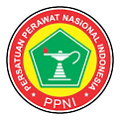Evaluating Dietary Content in TikTok’s “What I Eat in A Day” Videos
DOI:
https://doi.org/10.26630/jk.v16i2.4986Keywords:
Dietary habits, Digital media influence, Nutritional content, Social mediaAbstract
TikTok is widely used for eating-related content. One type of content uploaded by many content creators or influencers on TikTok is "What I Eat in A Day". There is a complex relationship between social media use and dietary habits, showing that social media can influence food choices and contribute to unhealthy eating patterns. This study aims to analyse the nutritional content of "What I Eat in a Day" videos on TikTok, examining the characteristics of content creators and evaluating their video dietary contents over the past three months from a nutritional perspective. This study uses a content analysis approach involved the collection and analysis of Indonesian TikTok "What I Eat in a Day" videos from February to May 2024. The nutritional variables assessed included fruit and vegetable consumption, calorie counting, weight monitoring, types of diets, and adherence to the "Isi Piringku" guidelines. The analysis revealed that less than 70% of content creators included fruits in their diet, with only half of them consuming vegetables. None of the videos adhered to the "Isi Piringku" dietary guidelines. These findings highlight a significant gap in promoting balanced diets among popular TikTok content. The rising trend of "What I Eat in a Day" videos on TikTok necessitates further research into their potential impact on viewers' dietary habits. Future studies should investigate how exposure to these videos influences audience behaviour and nutritional choices. Understanding this dynamic can inform public health strategies to promote healthier eating habits through digital media platforms.
References
Aji WN, Bambang D, Setiyadi P. (2020). Aplikasi Tik Tok Sebagai Media Pembelajaran Keterampilan Bersastra. METAFORA, 6(1), 147-157. https://jurnalnasional.ump.ac.id/index.php/METAFORA/article/view/7824
Arifin H, Chou K, Ibrahim K, Fitri SUR, Pradipta RO, Rias YA, Sitorus N, Wiratama BS, Setiawan A, Setyowati, Kuswanto H, Mediarti D, Rosnani, Sulistini R, Pahria T. (2022). Analysis of Modifiable, Non-Modifiable, and Physiological Risk Factors of Non-Communicable Diseases in Indonesia: Evidence from the 2018 Indonesian Basic Health Research. J Multidiscip Healthc, 15, 2203–2221. https://doi.org/10.2147/JMDH.S382191
Atasasih H. (2022). Sosialisasi “Isi Piringku” Pada Remaja Putri Sebagai Upaya Pencegahan Stunting. Dinamisia : Jurnal Pengabdian Kepada Masyarakat, 6, 116–121. https://doi.org/10.31849/dinamisia.v6i1.4685
Dixon H, Scully M, Wakefield M, Kelly B, Pettigrew S, Chapman K, Niederdeppe J. (2018). The impact of unhealthy food sponsorship vs. pro-health sponsorship models on young adults’ food preferences: A randomised controlled trial. BMC Public Health, 18(1299). https://doi.org/10.1186/s12889-018-6298-4
Drivas M, Reed OS, Berndt-Goke M. (2024). #WhatIEatInADay: The effects of viewing food diary TikTok videos on young adults’ body image and intent to diet. Body Image 49(101712). https://doi.org/10.1016/j.bodyim.2024.101712
Farrell, J. R., Campbell, C., & Sands, S. (2022). What drives consumers to engage with influencers? Segmenting consumer response to influencers: Insights for managing social-media relationships. Journal of Advertising Research, 62(1), 35–48. https://doi.org/10.2501/JAR-2021-017
Filippone L, Shankland R, Hallez Q. (2022). The relationships between social media exposure, food craving, cognitive impulsivity, and cognitive restraint. J Eat Disord, 10(184). https://jeatdisord.biomedcentral.com/articles/10.1186/s40337-022-00698-4
Haamiim V, Budiningsari RD, Wahab A. (2019). Karakteristik pilihan makanan dan informasi kandungan zat gizi makanan: studi melalui media sosial Instagram. BKM Journal of Community Medicine and Public Health, 35, 403-410. https://jurnal.ugm.ac.id/bkm/article/view/47379/26077
Kanchan S, Gaidhane A. (2023). A study to assess the efficacy of print and digital health communication media tools (HCMT) in rural and urban communities. F1000Res, 12(1314). https://doi.org/10.12688/f1000research.139997.1
Khaled, B. M., & Belbraouet, S. (2009). Effect of Ramadan fasting on anthropometric parameters and food consumption in 276 type 2 diabetic obese women. International Journal of Diabetes in Developing Countries, 29(2), 62. https://doi.org/10.4103/0973-3930.53122
Klassen KM, Douglass CH, Brennan L, Truby H, Lim MSC. (2018). Social media use for nutrition outcomes in young adults: a mixed-methods systematic review. International Journal of Behavioral Nutrition and Physical Activity, 15(70). https://doi.org/10.1186/s12966-018-0696-y
Livingstone KM, Burton M, Brown AK, McNaughton SA. (2020). Exploring barriers to meeting recommendations for fruit and vegetable intake among adults in regional areas: A mixed-methods analysis of variations across socio-demographics. Appetite,153(104750). https://doi.org/10.1016/j.appet.2020.104750
Looi J, Kemp D, Song YWG. (2023). Instagram Influencers in Health Communication: Examining the Roles of Influencer Tier and Message Construal in COVID-19-Prevention Public Service Announcements. Journal of Interactive Advertising, 23, 14–32. https://doi.org/10.1080/15252019.2022.2140316
Pardianti MS, Valiant V, Sos S, Ikom M. (2022). Pengelolaan Konten Tiktok sebagai Media Informasi. Jurnal Ilmu Komunikasi, 27(2), 187-210. https://doi.org/10.37817/ikon.v27i2.1905
Pfender EJ, Wanzer C, Bleakley AA. (2024). Content Analysis of Social Media influencers’ “What I Eat in a day” Vlogs on YouTube. Health Commun, 39, 2244–2255. https://doi.org/10.1080/10410236.2023.2260966
Pirsaheb S, Pasdar Y, Navabi SJ, Rezaei M, Darbandi M, Niazi P. (2013). Fasting Consequences during Ramadan on Lipid Profile and Dietary Patterns. Journal of Fasting and Health, 1(2), 6-12. https://jnfh.mums.ac.ir/article_300_7c3bd8b69995b684584b5a6b3468c23d.pdf
Rahmayanti R, Alisa F, Yusri V, Sastra L. (2023). Edukasi Pola Makan Sehat Di Hari Raya Dan Pemanfaatan Terapi Komplementer. Jurnal Mitra Masyarakat, 4(1), 60–65. https://doi.org/10.47522/jmm.v4i1.166
Rounsefell K, Gibson S, McLean S, Blair M, Molenaar A, Brennan L, Truby H, McCaffrey TA. (2020). Social media, body image, and food choices in healthy young adults: A mixed-methods systematic review. Nutr Diet,77, 19–40. https://doi.org/10.1111/1747-0080.12581
Shinde N, Garg V. (2020). Social Media Usage, Eating Habits, and Nutritional Status of School-Going Adolescents: A Descriptive Study. International Journal of Scientific Research in Biological Sciences, 7, 19–25. https://ijsrbs.isroset.org/index.php/j/article/view/381/381
Shutsko, A. (2020). Social Computing and Social Media. Participation, User Experience, Consumer Experience, and Applications of Social Computing: 12th International Conference, SCSM 2020, Held as Part of the 22nd HCI International Conference, HCII 2020, Copenhagen, Denmark, July 19–24, 2020, Proceedings, Part II (Vol. 12195). Springer Nature. https://doi.org/10.1007/978-3-030-49576-3_8
Zeng, M., Grgurevic, J., Diyab, R., & Roy, R. (2025). #WhatIEatinaDay: The Quality, Accuracy, and Engagement of Nutrition Content on TikTok. Nutrients, 17(5), 781. https://doi.org/10.3390/nu17050781
Downloads
Published
Issue
Section
License
Copyright (c) 2025 Pasqualica Harinanhening Damanik, Alta Dantiana, Bernadetta Nova Puspitasari, Dewi Prita, Fidella Citromulyo, Ritia Shafa Septisari, Dwi Budiningsari, Siti Helmiyati, Anis Fuad

This work is licensed under a Creative Commons Attribution-ShareAlike 4.0 International License.
Authors who publish in this journal agree to the following terms:
- Authors retain copyright and grant the journal right of first publication with the work simultaneously licensed under a Creative Commons Attribution License (CC BY-SA 4.0) that allows others to share the work with an acknowledgment of the work's authorship and initial publication in this journal.
- Authors can enter into separate, additional contractual arrangements for the non-exclusive distribution of the journal's published version of the work (e.g., post it to an institutional repository or publish it in a book), with an acknowledgment of its initial publication in this journal.
- Authors are permitted and encouraged to post their work online (e.g., in institutional repositories or on their website) prior to and during the submission process, as this can lead to productive exchanges and earlier and greater citations of published work.











